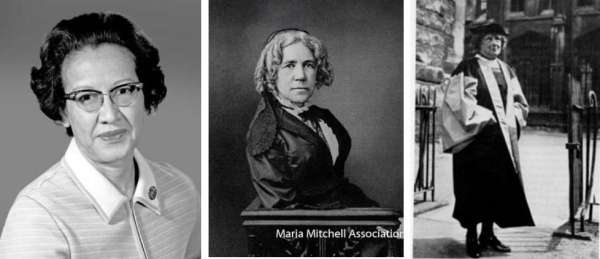 August first is a day to honor women in astronomy, so it’s a great time to teach kids about the many female astronomers, computers and other experts who have shaped the way we see the universe.
August first is a day to honor women in astronomy, so it’s a great time to teach kids about the many female astronomers, computers and other experts who have shaped the way we see the universe.
I was trying to figure out if there’s a reason Women’s Astronomy Day is August 1, but the best I could come up with is that it’s the day German astronomer Caroline Hershel (1750 – 1848) discovered her first comet. She was known for discovering nebulas and comets, and has one named after her, 35P/Herschel-Rigollet. She was also the first woman to receive the Gold Medal of the Royal Astronomical Society.
I don’t know if that’s the reason, but we’ll call it that.
If you’re a little low on education in famous female astronomers yourself, I’m here to help. That information on Caroline Hershel came from ASTRON, the Netherlands Institute for Radio Astronomy, which has a page full of short bios of female astronomers you can check out.
Astronomy.com has a PDF you can download with stories about 10 female astronomers we all ought to know more about, from Katherine Johnson (known as one of the “Hidden Figures” who computed for NASA and was instrumental in calculating the trajectory for the first manned space flights) to Vera Rubin, who helped discover dark matter. It’s a little outdated but still good basic information to start with.
Or you can learn about Maria Mitchell, who discovered a comet in 1847 and was the first female member of the American Academy of Arts and Sciences, as well as the first astronomy professor at Vassar. She’s known as America’s first female astronomer, and the website for the Maria Mitchell Association has a great lesson plan and information for students wanting to learn more about her.
There’s also a lot of great information about the female astronomers of Harvard University from the late 1800s and early 1900s. Annie Cannon is one of the most well-known, as she catalogued more than 20,000 stars and her system of classification was adopted with few alterations by the International Astronomical Union in 1910. And Henrietta Leavitt discovered how to tell how far stars are from Earth based on their brightness.
For older students, choosing one of these scientists to learn more about would be fruitful and remind them that science has rarely been an exclusively male domain, we just don’t normally take the time to learn about the women who did much groundbreaking work. It’s time to change that!
[Photos: Katherine Johnson via NASA, Maria Mitchell via Maria Mitchell Association, Annie Cannon via Carleton.]
 I’ve shared a lot of ideas for
I’ve shared a lot of ideas for
Leave a Reply